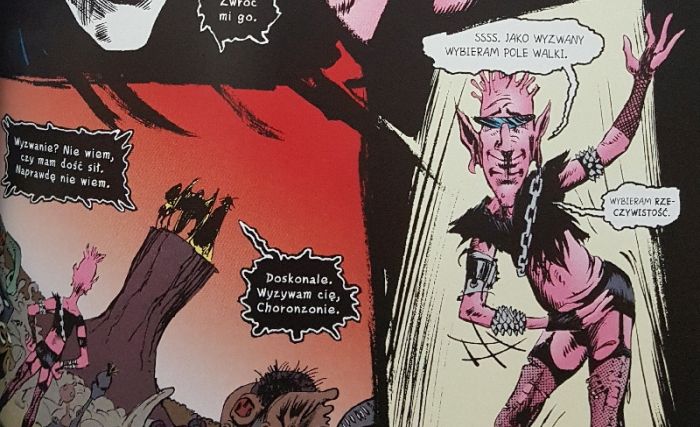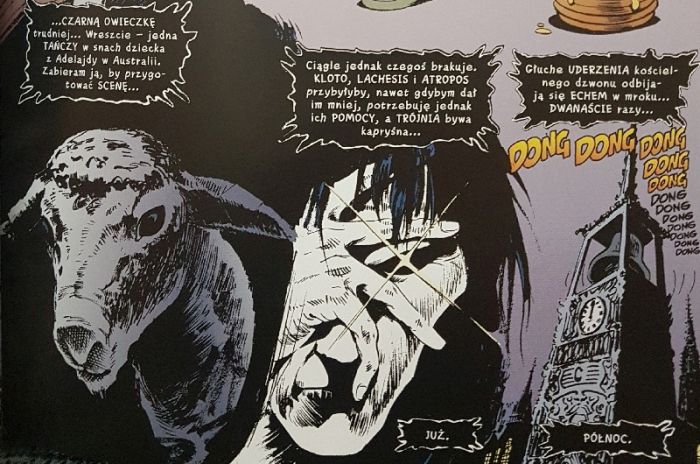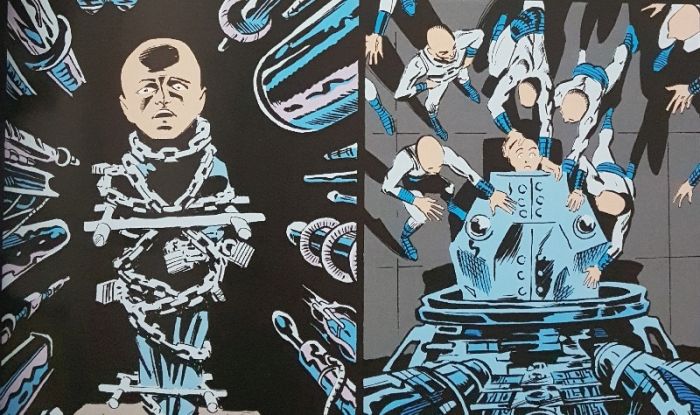I will not be trying to be cheap controversy or any other kind of snobbery. Yes, Sandman is a great read. At least the first volume, Preludes and Nocturnes , because I cannot comment on the rest of the story yet. Despite all the hype around Gaiman’s title, it somehow happened that the cycle was always on my personal pile of shame. The new edition of Egmont has finally allowed me to catch up with the classics.
Zzz…
The story begins in 1916, when Burgess, an ominous British occultist, decides to enslave Death itself with a mysterious book. As a result of a mistake, another of the Infinite ones – Morpheus – falls into a trap. This is the beginning of the hero’s decades of captivity, during which people all over the world – until Morpheus manages to escape and take revenge on the descendant of his torturer – have trouble sleeping. However, during the “interregnum”, the land of the Lord of Dreams, Dreaming, completely deteriorated, and the attributes of power: a sandbag, helmet and lunar ruby fell into the hands of outsiders. The hero sets out on a mission to regain his former power.

Chrrrr…
Although we are peers with Sandman (we were founded in 1988), the comic book still stands out with its amazing form (I hope you can say the same about me). Gaiman has created a narrative masterpiece. Although the Preludes and Nocturnes are only the beginning of a multi-volume cycle, there is room for several stories with a completely different tone. The very beginning, focusing on Burgesses, presents a nuanced tale of the thirst for power and its negative consequences. The core of the plot, however, consists of the search for the attributes of power – just like in a racial RPG, Morpheus has three different quests to completein different locations. The search for sand is related to the superhero DC – the protagonist meets, among others, Martian Manhunter and Constantine. However, allergic to leotards can breathe a sigh of relief – it is so subtle that it might as well be without ties to heroes. The quest for the helmet takes the protagonist to Hell itself, but far from Dante’s descriptions. The land of the damned is inhabited by dozens of grotesque creatures. I like unusual designs, far from the norms – but in this case everything is strange on the one hand, and not particularly creative on the other. The enemy of the Dream Lord – Chronozon – is a bipedal pink, wearing chains, scraps of clothes and a garter belt demon with a haircut like from a nineties disco. A duel of two supernatural beings,Disney’s Magic Cauldron . In the thread with the search for ruby, horror and psychedelia rule, and the scenes in a certain bar will be remembered for a long time. The best story in the volume comes at the end, because I was most impressed by the poignant story in which Morpheus accompanies his sister, Death, when she comes for the souls of the dead.

Zzzzz…
I know that Sam Kieth is an artist admired by many. I also appreciate that Sandman is dominated by the author’s line, far from a superhero cliché. But what can I do if Kieth’s drawings are rejecting me. Too expressive where history begs for a more subtle approach. Fortunately, as can be found in the afterword, the artist himself decided to resign from cooperation at some point. Mike Dringeberg, who was replacing him, did much better in my opinion.

Chrrrrrr…
Apart from the cover, the new edition of Egmont is no different from the previous ones. If someone had them before, buying a re-edition does not make much sense. The reissue, however, is directed to the likes of me, who are just getting acquainted with such an important work in the history of comics as the flagship work of Neil Gaiman.

